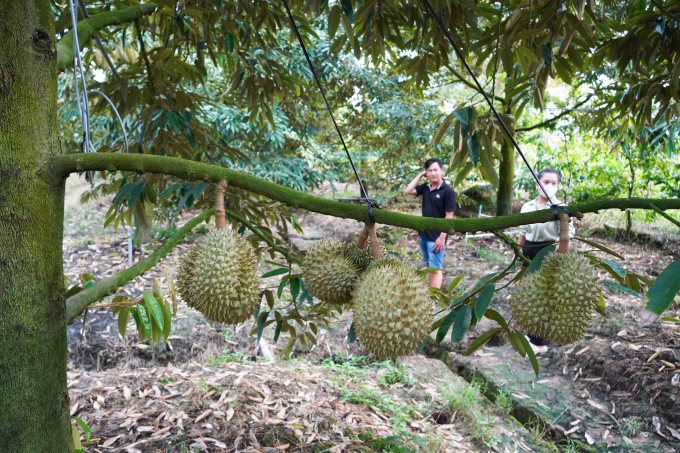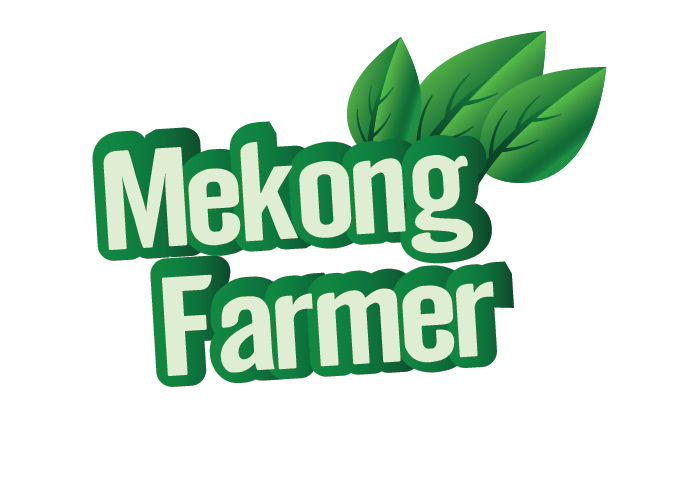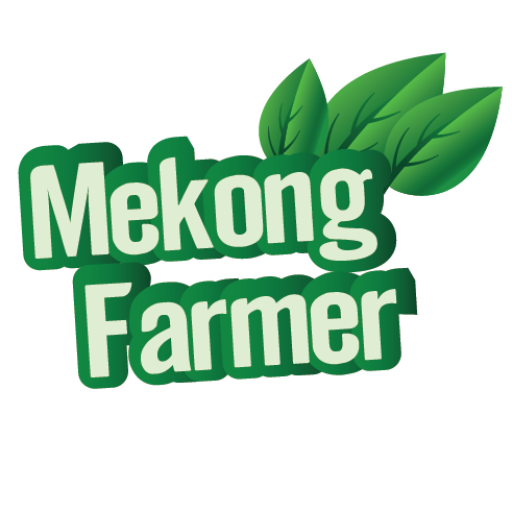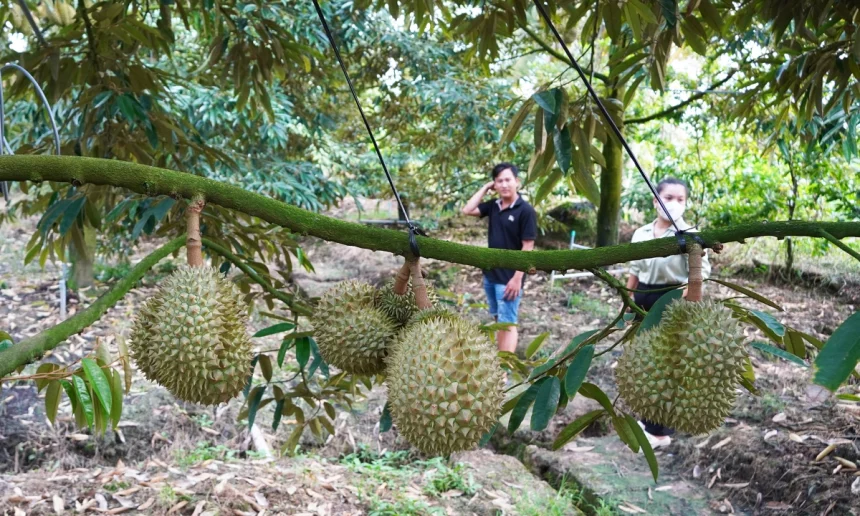Durian prices decreased deeply, many Western farmers were in a difficult position – unable to reduce the cost of care for fear of exhausted trees and loss after many years of large investment.
Mr. Nguyen Thanh Binh, durian planting for nearly 20 years in Cai Lay district (Tien Giang), said that it has just sold 9 tons of durian like Ri6 and Mongthon for 30,000 VND/kg, earning a profit of 30 million VND on 3,000 m2 of land. “This price is low, interest is like doing all year,” he said.
The biggest difficulty according to Mr. Binh is the cost of taking care of post -harvest trees that cannot be cut. Each week, he spent a million dong spraying. The process of flowering, must spray fruit and leaves twice, not to mention fertilizer. “If the investment stops, the tree is easy to depleted or died, as if losing white,” he said. The average production cost ranges from 28,000-38,000 VND/kg, depending on the price of supplies.

Harvesting durian in Cai Lay town, Tien Giang. Image: Hoang Nam
About 50 km away, Mr. Luong Nhu Y, owner of 5,000 m2 of durian in My Long commune (Dong Thap), after 7 years of investing more than VND 500 million, has just recovered capital and profit 60 million VND after three crops. According to him, every subsequent case also costs hundreds of millions of dong. “It is impossible to leave the garden, but the next investment is worried about losses,” he said.
According to Dr. Le Quoc Dien, former Director of the Center for Science and Technology Transfer of the Southern Fruit Institute, durian only starts fruit after 5 years of planting. Pressing the tree to the fruit early will cause the tree to depleted, even dying cannot be saved.
The care process requires strict techniques, from pruning, creating canopy to nutrition and treating fruit. Each tree should only be less than 5 m high, with a maximum of 18 branches, carrying about 80 fruits. The ratio of old leaves – young leaves should be maintained at 60/40. If the wrong fertilizer can cause the fruit to be embarrassed, the tree is lost and dies.
Durian is also difficult to intercropped with short -term trees due to high nutritional requirements, easy to cause roots for other plants. This is why this tree is called “royal tree” or “rich tree”.
Dr. Dien said the investment cost was very large, from 1-3 billion dong per hectare for 5 years, depending on the land conditions. When the fruit is left, each hectare needs about 500 million VND per year for fertilizers, drugs and labor. If investing, the tree will weaken and die.
“The long planting time, large capital makes many farmers easily fall into the poor trap. Some people have to sell the garden when the trees have not been able to keep the fruit because they are shallow, no longer able to borrow,” he said.

Durian prices decreased deeply, but gardeners could not stop investing high costs for fear of exhaustion and death. Image: Hoang Nam
From 2015 to 2024, the area of durian nationwide increased 5 times, from 32,000 ha to more than 178,000 ha, the output reached more than 1.5 million tons. In particular, the West has about 35,000 ha, Tien Giang alone accounts for 24,000 ha.
However, the price of durian is only one -third compared to the same period last year. The main reason is China, the largest export market, tightening the content of O – substance with a risk of cancer, causing many shipments to be returned, and it must be consumed at a low price.
In 2023, durian set a record of US $ 3.3 billion, accounting for nearly half of the value of vegetables. But in the first two months of this year, the turnover decreased by 69%, to 52.7 million USD; Particularly exported to China by 83%, to 27 million USD. Durian from the number one export position falls to the third, after the dragon and bananas.
According to Mr. Le Chi Thien, Director of Dong Thap Department of Agriculture and Environment, durian prices decreased as a general trend in the whole region. In the immediate future, localities strengthen technical training, guide farmers to improve the quality of fruit, limit the residues of banned substances, and at the same time find solutions to reduce costs to increase the ability to stay firmly in the precarious price period.
Ngoc Tai



